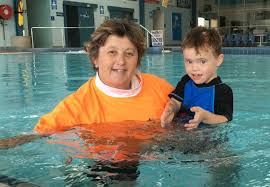Why Is a Water Safety Course So Important for Swim Teachers?
Straight up — without a proper water safety course, you’re not just unprepared; you’re potentially putting lives at risk.
Anyone who’s spent time poolside knows kids can panic fast. One second they’re laughing, the next they’re gulping water. Knowing the right rescue techniques, emergency procedures, and risk management isn’t “nice to have” — it’s non-negotiable.
A credible water safety course teaches you:
- Basic and advanced rescue skills
- Child-safe aquatic supervision methods
- How to identify and manage risky behaviours
- Techniques for preventing accidents before they happen
And trust me, parents can spot a swim teacher who knows their stuff from a mile away. Authority matters in this gig — and your formal water safety training is what builds it.
[External Authoritative Link: Read more about aquatic supervision from Royal Life Saving Australia here].
What Personal Qualities Make a Great Swim Teacher?
Qualifications aside, being a learn to swim teacher is about way more than technique. It’s about you — your energy, your instincts, and yes, your ability to stay calm when things don’t go to plan (and they won’t).
Some key traits you’ll need:
- Patience: Some kids will take weeks to put their face in the water. That’s normal.
- Positivity: Kids feed off energy. If you’re flat, they’ll pick it up immediately.
- Adaptability: What worked yesterday might bomb today. Be ready to switch gears.
- Empathy: Fear of water is real. Respect it.
Real talk: Anyone who’s worked with nervous beginners knows — it’s not about “pushing” kids into overcoming fear. It’s about gently guiding them, giving them small wins that build big confidence.
How Can I Build Trust Quickly with Young Swimmers?
You can’t teach a scared or shy child much until they trust you — period.
Here’s what’s worked for me over the years:
- Get down to their level: Literally squat or kneel beside them so you’re not towering.
- Use their name early and often: “Great job, Ava!” makes a huge difference.
- Celebrate tiny milestones: First face splash? Huge cheers. First star float? Medal-worthy.
- Never force immersion: Trust builds when kids know they control their bodies.
A lot of adults underestimate how intuitive kids are. They know if you’re frustrated. They know if you’re faking encouragement. Real warmth beats fake enthusiasm every time.
What Practical Skills Do Good Swim Teachers Master?
Here’s a checklist every quality swim teacher should quietly smash without making a fuss:
- Demonstrating water skills clearly — not just doing them yourself but breaking them down simply.
- Recognising signs of fatigue or fear early — before a situation escalates.
- Managing group dynamics — handling excited chatterboxes and silent watchers equally.
- Communicating with parents — keeping them updated honestly (and diplomatically).
- Adjusting lesson plans on the fly — if a planned game flops, pivot without losing the group.
It’s not about being flashy. The best swim teachers make it all look effortless — even though there’s a thousand micro-decisions happening behind the scenes every minute.
How Do I Keep My Skills Sharp After Becoming Qualified?
Completing a water safety course is just your starting block. A good swim teacher never stops learning.
Simple ways to keep growing:
- Attend annual refresher courses — rules and best practices evolve.
- Seek feedback from mentors or senior teachers.
- Observe other instructors. Watch how they manage tricky moments.
- Read industry updates and safety bulletins.
Personally, every time I watch an experienced teacher run a session, I pick up some subtle trick — a better way to explain kicking, a funnier warm-up game, a calmer way to settle a noisy group.
Learning doesn’t stop at graduation. Good swim teachers are lifetime students.
Real Talk: What’s the Hardest Part About Being a Swim Teacher?
It’s not the cold mornings or the soggy towels. It’s emotional resilience.
Some days, despite your best prep, everything feels like a slog:
- A kid melts down.
- A parent hovers and critiques.
- The group gets silly and won’t focus.
Anyone who’s taught swimming knows — it’s humbling. But it’s also one of the most rewarding jobs on earth. Watching a terrified child laugh underwater for the first time? There’s nothing like it.
You don’t need to be perfect. You just need to care enough to show up, stay patient, and believe every kid can get there eventually — even if the road’s messy.
FAQs: Quick Tips for Aspiring Swim Teachers
Q: Can I teach swimming without formal qualifications?
Technically? Maybe. Should you? Absolutely not. Completing a recognised water safety course protects you legally, ethically, and practically.
Q: How long does it take to become a swim teacher?
Most initial certifications take a few weeks part-time, but practical placement and building real-world experience can take several months.
Q: What’s the most important thing to teach beginners?
Confidence in the water before technique. A calm, relaxed child learns strokes ten times faster than a scared one.
Conclusion
Being a good learn to swim teacher isn’t about being a champion swimmer. It’s about mastering safety, building trust, and being the steady voice kids can rely on in a big, splashy, sometimes scary environment.
If you’re serious about starting strong, enrolling in a respected water safety course should be your first move.
And if you’re curious about the broader pathway into swimming education, including how becoming an AUSTSWIM Teacher opens up career doors, there’s plenty more to explore too. Just remember: the real magic isn’t in the certificate — it’s in every smile you coax out of a nervous little swimmer.

